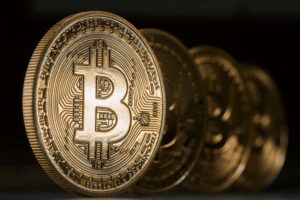XRP, the cryptocurrency distributed by Ripple, is increasingly being recognized as a potential game-changer in the financial world, particularly in addressing the longstanding liquidity challenges faced by banks globally. As Ripple continues its efforts to position XRP as a vital tool for enhancing cross-border payment efficiency, the crypto community and financial experts are paying close attention.
A recent post by the prominent crypto enthusiast SMQKE (@SMQKEDQG) sheds light on Ripple’s vision for XRP, using compelling documentation from Ripple’s archives. According to Ripple, XRP is designed to address the inefficiencies that arise when banks hold large reserves in multiple currencies to facilitate international transactions. These reserves, often sitting idle, create a significant drag on financial institutions.
XRP – The Digital Gold For Liquidity
Ripple has long touted XRP as a solution to this problem. A marketing document from 2013 describes XRP as “like gold in your hands,” emphasizing its role as the most liquid asset on the XRP ledger. The concept is simple yet revolutionary: instead of holding vast cash reserves in different currencies, banks could use XRP to transfer value instantly across borders. This would drastically reduce the need for dormant reserves and allow banks to manage liquidity more dynamically.
Ripple’s former Chief Technology Officer, Stefan Thomas, articulated this vision by suggesting that banks could “teleport” liquidity around the world using XRP as a bridge currency. In his words, “Banks will have ‘gold’ that you can teleport into any vault in the world instantly,” highlighting the unparalleled speed of XRP transactions.
The Ripple Effect And Real-World Applications and Basel III Compliance
XRP’s potential as a liquidity provider is not just theoretical. It has already proven effective in real-world scenarios, particularly in Japan, where experts have noted its reliability. The Ripple ledger’s ability to process thousands of transactions per second at a fraction of a cent per transaction, with completion times as quick as two to three seconds, makes it an attractive option for banks.
This efficiency is especially relevant in the context of Basel III regulations, which require banks to maintain high liquidity reserves. SMQKE’s analysis highlights how XRP could help banks comply with these regulations by reducing the need for dormant reserves and enabling on-demand liquidity management.
Ripple’s integration efforts are gradually gaining traction, with trials already showing promise. SMQKE cites an example where 12 banks successfully used XRP to settle real-time payments in collaboration with the technology consortium R3. These trials underscore Ripple’s commitment to a future where banks can conduct cross-border transactions seamlessly and efficiently.
Also Read: Crypto Analyst Predicts XRP and RLUSD Dominance Following Tether Bubble Collapse
A Gradual Path to Widespread Adoption
Despite the excitement, Ripple’s approach to integrating XRP into the banking sector is cautious. The company’s executives have emphasized that their priority is adoption and utility rather than short-term price movements. As SMQKE notes, Ripple’s “big idea” is to leverage XRP as a liquidity provider for banks, but this will only become feasible as XRP’s market capitalization and trade volumes increase.
In conclusion, XRP’s role in solving global banking liquidity challenges is becoming more apparent as Ripple’s strategic vision unfolds. While there is still a long way to go, the groundwork is being laid for XRP to become a cornerstone of the future financial landscape.
Disclaimer: The information in this article is for general purposes only and does not constitute financial advice. The author’s views are personal and may not reflect the views of Chain Affairs. Before making any investment decisions, you should always conduct your own research. Chain Affairs is not responsible for any financial losses.



